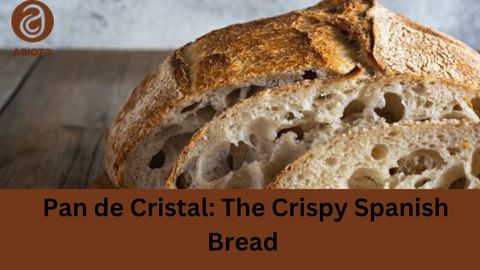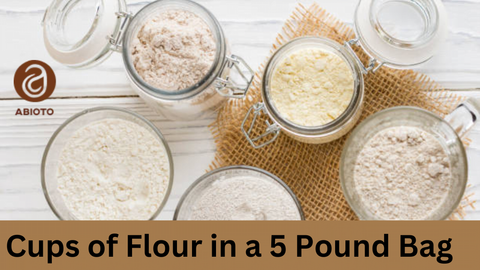Pan de cristal, or "glass bread," is a traditional Spanish bread that has recently gained popularity in the United States. Its unique texture and flavor have made it a favorite among foodies and bread enthusiasts alike. The bread's name comes from its thin, crispy crust that resembles a sheet of glass.
Unlike other breads, the
best bread making for pan de cristal is made with a high hydration dough that is stretched and rolled out until it is paper-thin. This process creates a network of air pockets within the dough, which gives the bread its signature light and crispy texture. The bread is then baked at a high temperature, which further crisps up the crust and creates a chewy interior.
While pan de cristal is traditionally served as an accompaniment to savory dishes, it can also be used in a variety of sweet applications. Its neutral flavor pairs well with both sweet and savory ingredients, making it a versatile addition to any meal. With its unique texture and flavor, it's no wonder that pan de cristal has become a beloved bread in both Spain and the United States.
What is Pan De Cristal
Pan de Cristal, also known as glass bread, is a type of bread that originated in the Catalan region of Spain. This bread is known for its thin, crispy crust and airy, hole-filled interior. The name "pan de cristal" translates to "crystal bread" in English, which refers to the bread's delicate and translucent appearance.
To make pan de cristal, the dough is stretched out very thin and then baked at a high temperature. This process creates a crust that is crispy and shatters when bitten into, while the inside remains soft and chewy. The bread is often served with a drizzle of olive oil and a sprinkle of salt, making it a simple yet delicious snack or accompaniment to a meal.
Pan de cristal has become increasingly popular in recent years, with many bakeries and restaurants across Spain and beyond offering their own versions of the bread. Its unique texture and flavor make it a standout choice for sandwiches, toast, and even as a base for pizza.
Overall, pan de cristal is a beloved staple of the Catalan region and a delicious addition to any meal.
Ingredients of Pan De Cristal
Pan de Cristal is a type of bread that originated in Spain. It is known for its crispy crust and airy texture. The bread is made with a few simple ingredients that work together to create its unique flavor and texture.
The main ingredients of Pan de Cristal are flour, water, yeast, olive oil, and salt. The type of flour used can vary, but it is typically a combination of bread flour and high protein flour. This combination of flours helps to create the bread's signature crispy crust and airy texture.
Some recipes for Pan de Cristal also call for the use of a sourdough starter. This is a mixture of flour and water that has been allowed to ferment for several days. The sourdough starter adds flavor and complexity to the bread.
Yeast is another key ingredient in Pan de Cristal. Both instant yeast and fresh yeast can be used, depending on the recipe. The yeast helps the bread to rise and gives it a light, airy texture.
In addition to these main ingredients, some recipes for Pan de Cristal call for the use of barley malt, sea salt, and sugar. These ingredients add flavor and help to enhance the bread's texture.
Overall, the ingredients of Pan de Cristal are simple but carefully chosen to create a bread that is both flavorful and texturally unique.
The Process of Making Pan De Cristal
Pan de cristal, also known as "glass bread," is a Spanish bread with a crispy, thin crust and a soft, airy crumb. Here's a brief overview of the process of making pan de cristal.
Mixing the Dough
To make pan de cristal, you'll need to mix a high-hydration dough. This means that the dough will have a lot of water relative to flour, which helps create the bread's open crumb and crispy crust.
The dough is typically made using a combination of flour, water, salt, and yeast or a starter. The ingredients are mixed together until a shaggy dough forms, then left to rest for a short period of time.
Folding and Fermentation
After the initial mixing, the dough is folded several times to develop gluten and create structure. The folding process can be done using a coil fold or a bowl fold.
Once the dough has been folded, it's left to ferment for several hours at room temperature. During this time, the yeast or starter in the dough will produce carbon dioxide, which causes the dough to rise.
Shaping and Proofing
After the dough has fermented, it's shaped into rectangles using a bench knife. The rectangles are then placed on a baking sheet and left to proof for a final rise.
During the proofing stage, the dough is covered with a damp cloth to prevent it from drying out. This allows the dough to rise one last time before baking.
Baking
To bake pan de cristal, the dough is placed in a very hot oven. The high temperature helps create the bread's crispy crust.
The bread is typically baked for a short period of time, around 10 minutes, until it's golden brown and crispy. Once the bread is done baking, it's removed from the oven and left to cool before serving.
Overall, making pan de cristal requires a high level of skill and attention to detail. By following the right recipe and techniques, however, you can create a delicious and unique bread that's sure to impress.
Baking Pan De Cristal
Baking pan de cristal requires a few key steps to achieve the perfect crust and structure. Here are some tips to help you get the best results:
- Preheat your oven to 450°F (232°C) and place a baking stone or steel on the middle rack. If you don't have a baking stone or steel, a preheated baking sheet will also work.
- Prepare your dough according to the recipe, ensuring it has enough slack to create the characteristic large holes in the crumb.
- Once your dough has risen, shape it gently on a heavily floured surface. You can use a cast iron pan or an oven-safe skillet to help shape the dough to the desired size.
- Transfer the shaped dough to a piece of parchment paper and place it on the preheated baking stone or steel. If using a baking sheet, transfer the parchment paper with the dough onto the preheated sheet.
- Add a steam pan to the bottom of your oven and quickly close the door to trap the steam. Alternatively, you can add ice cubes to a preheated cast iron pan or skillet to create a blast of steam.
- Bake the pan de cristal for 10-12 minutes, until the crust is crispy and golden brown.
- Once the pan de cristal is done, transfer it to a wire rack to cool.
By following these steps, you can achieve a crusty exterior and a soft, airy interior that is characteristic of pan de cristal.
Understanding the Texture and Flavor
Pan de cristal is a unique type of bread that is known for its crispy and airy texture. It has a light, open crumb structure that is achieved through a specific baking process. Understanding the texture and flavor of pan de cristal can help you appreciate this bread even more.
Structure
Pan de cristal has a thin, delicate structure that is achieved by using a high hydration dough. The dough is stretched and folded multiple times to create layers that result in a shatteringly crisp crust. The high hydration also contributes to the open crumb structure that is characteristic of pan de cristal.
Crumb
The crumb of pan de cristal is open and airy, with irregular holes throughout. This texture is achieved through the use of a wet dough and a long fermentation process. The fermentation allows the yeast to develop and create gas, which results in the airy crumb.
Flavor
Pan de cristal has a mild flavor that complements a wide variety of toppings and fillings. The flavor is slightly tangy and nutty, with a hint of sweetness. The mild flavor allows the bread to be used as a versatile base for sandwiches, toast, and more.
Open Crumb Structure
The open crumb structure of pan de cristal is achieved through a combination of factors, including high hydration, a long fermentation process, and a specific baking technique. The open crumb structure allows the bread to be light and airy, with a delicate texture that is perfect for sandwiches and toasting.
Texture
The texture of pan de cristal is silky and shatteringly crisp. The thin, delicate structure of the bread creates a crispy crust that shatters when you bite into it. The airy crumb adds to the light texture of the bread, making it a unique and enjoyable eating experience.
In conclusion, understanding the texture and flavor of pan de cristal can help you appreciate this unique bread even more. Its delicate structure, open crumb, mild flavor, and shatteringly crisp texture make it a versatile bread that is perfect for a wide variety of uses.
Sourdough Version of Pan De Cristal
For those who prefer a sourdough version of pan de cristal, it is possible to make this delicious bread using a sourdough starter. Sourdough is a natural leavening agent that gives bread a unique flavor and texture. Here's how to make sourdough pan de cristal:
Ingredients:
- 500g bread flour
- 350g water
- 100g sourdough starter
- 10g salt
Instructions:
- In a large mixing bowl, combine the flour, water, and sourdough starter. Mix until well combined.
- Add the salt and mix again until well combined.
- Cover the bowl with a damp cloth and let it rest for 30 minutes.
- After 30 minutes, fold the dough over itself a few times to strengthen the gluten.
- Cover the bowl again and let it rest for another 30 minutes.
- Repeat the folding and resting process two more times, for a total of three times.
- After the third fold, cover the bowl and let the dough rise for 2-3 hours, or until it has doubled in size.
- Preheat the oven to 500°F (260°C) and place a baking stone or baking sheet in the oven to preheat.
- Divide the dough into 4-6 pieces and shape each piece into a rectangle.
- Place the rectangles on a piece of parchment paper and let them rest for 15-20 minutes.
- When the oven is hot, transfer the parchment paper with the dough rectangles onto the preheated baking stone or baking sheet.
- Bake for 10-12 minutes, or until the bread is golden brown and crispy.
Sourdough pan de cristal has a slightly tangy flavor and a chewy texture. It pairs well with a variety of toppings, such as olive oil, cheese, and cured meats. This bread is a great option for those who are looking for a healthier version of pan de cristal, as sourdough is easier to digest and has a lower glycemic index than commercial yeast.
Tips and Tricks for Perfect Pan De Cristal
Pan de cristal is a delicious Spanish bread that is crispy on the outside and soft on the inside. Making it at home can be a bit tricky, but with these tips and tricks, you'll be able to achieve the perfect pan de cristal every time.
Tips
- Use high-quality flour: King Arthur Flour is a great option for making pan de cristal.
- Use a bench scraper: A bench scraper is essential for shaping and dividing the dough.
- Use a cutting board: A large cutting board is helpful for shaping the dough and transferring it to the oven.
- Use DDT: DDT (desired dough temperature) is the temperature at which you want your dough to be when it is ready to bake. Use a thermometer to measure the temperature of your ingredients and adjust accordingly.
- Use steam: Adding steam to the oven during the first few minutes of baking will help create a crispy crust.
Videos
If you're new to making pan de cristal, watching a few videos can be helpful. Bread Baking Babes and Joy Ride Coffee both have great tutorials on YouTube.
Timeline
Here's a sample timeline for making pan de cristal:
- Mix the dough and let it rest for 30 minutes.
- Divide the dough and let it rest for another 30 minutes.
- Shape the dough and let it rest for 30 minutes.
- Preheat the oven and let the dough rest for another 30 minutes.
- Bake the bread for 10-12 minutes, adding steam to the oven during the first few minutes.
Testing for Success
To test if your pan de cristal is done, tap the bottom of the bread. It should sound hollow. If it doesn't, bake it for a few more minutes.
Remember, practice makes perfect when it comes to
making pan de cristal. Don't be discouraged if your first few loaves don't turn out exactly as you hoped. Keep trying and you'll get the hang of it in no time.
Storing and Serving Pan De Cristal
Pan de cristal is best enjoyed fresh, but if you have leftovers or want to save some for later, there are a few things to keep in mind.
Storing
To keep your pan de cristal fresh for as long as possible, store it in an airtight container or plastic bag at room temperature. Avoid storing it in the refrigerator, as this can dry it out and make it stale more quickly.
If you won't be eating your pan de cristal within a day or two, you can freeze it for later. Wrap it tightly in plastic wrap and then place it in a freezer-safe container or bag. When you're ready to eat it, simply thaw it at room temperature for a few hours before serving.
Serving
When you're ready to serve your pan de cristal, there are a few ways to enjoy it.
One popular way is to make a sandwich with it. The crisp texture of the bread pairs well with a variety of fillings, from sliced meats and cheeses to vegetables and spreads.
Another way to enjoy pan de cristal is to serve it alongside a meal. It makes a great accompaniment to soups, stews, and salads.
For a sweet treat, try topping your pan de cristal with chopped chocolate and a sprinkle of sea salt. The combination of the crispy bread and rich chocolate is sure to satisfy your sweet tooth.
Remember, pan de cristal is best enjoyed fresh, so try to eat it within a day or two of baking. If you do have leftovers, store them properly to keep them fresh for as long as possible.



Comments (0)
There are no comments for this article. Be the first one to leave a message!